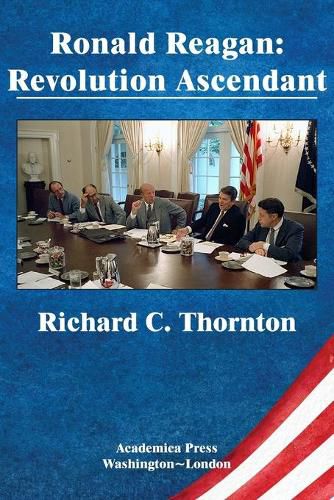Readings Newsletter
Become a Readings Member to make your shopping experience even easier.
Sign in or sign up for free!
You’re not far away from qualifying for FREE standard shipping within Australia
You’ve qualified for FREE standard shipping within Australia
The cart is loading…






When Ronald Reagan was elected president in 1980, he found America’s economy, defense, and global position weakened to the point of collapse. The previous seven years of attempted detente with the Soviet Union had resulted in the worst foreign policy failures in American history. As the distinguished diplomatic historian Richard C. Thornton shows in this thorough reassessment of Reagan’s presidency, written for the 40th anniversary of his election, the new president was determined to rebuild American economic and military power and to restore the Western Alliance. Reagan’s Victory Program supported anti-Soviet resistance movements in communist countries, attacked the financial underpinnings of the Soviet economy, and boldly challenged the Soviet Union’s forward positions around the world. The deployment of Pershing II missiles to Europe in 1983 restored the balance of power in Europe and, combined with the U.S. military buildup, reestablished strategic equilibrium between the United States and the Soviet Union by the end of Reagan’s first term. As America faces a host of new challenges in the world today, this reexamination will be of interest to students, scholars, and practitioners alike.
$9.00 standard shipping within Australia
FREE standard shipping within Australia for orders over $100.00
Express & International shipping calculated at checkout
When Ronald Reagan was elected president in 1980, he found America’s economy, defense, and global position weakened to the point of collapse. The previous seven years of attempted detente with the Soviet Union had resulted in the worst foreign policy failures in American history. As the distinguished diplomatic historian Richard C. Thornton shows in this thorough reassessment of Reagan’s presidency, written for the 40th anniversary of his election, the new president was determined to rebuild American economic and military power and to restore the Western Alliance. Reagan’s Victory Program supported anti-Soviet resistance movements in communist countries, attacked the financial underpinnings of the Soviet economy, and boldly challenged the Soviet Union’s forward positions around the world. The deployment of Pershing II missiles to Europe in 1983 restored the balance of power in Europe and, combined with the U.S. military buildup, reestablished strategic equilibrium between the United States and the Soviet Union by the end of Reagan’s first term. As America faces a host of new challenges in the world today, this reexamination will be of interest to students, scholars, and practitioners alike.